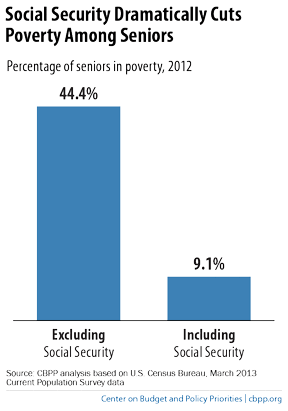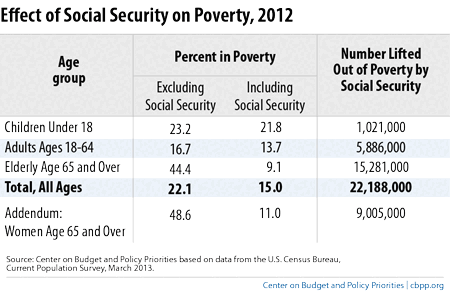off the charts
POLICY INSIGHT
BEYOND THE NUMBERS
BEYOND THE NUMBERS
Social Security Keeps 22 Million Americans Out of Poverty
Receive the latest news and reports from the Center
Social Security lifted 22 million people out of poverty in 2012, according to our updated analysis (with state-by-state data) of Census data. This includes not just 15 million elderly Americans but also many younger people, including 1 million children who either received their own benefits as dependents of retired, disabled, or deceased workers or lived with relatives who received Social Security. (See table below.)

Given the program’s powerful anti-poverty impact, cuts in Social Security benefits could significantly raise poverty — particularly among the elderly and the disabled — depending on their design.
Social Security benefits are already modest, both in dollar terms (the average retired worker receives less than $1,300 a month) and by international standards.
Social Security accounts for two-thirds of income for its elderly beneficiaries, on average. And more than a third of beneficiaries — generally the oldest and poorest — rely on Social Security for at least 90 percent of their income.
While policymakers should work to close Social Security’s long-term funding gap, they should remember this program’s vital importance for Americans of all ages.
